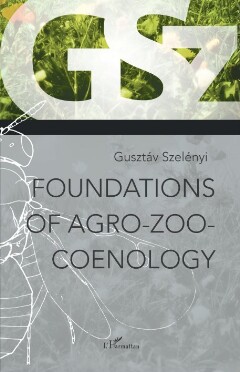

OCR
100 ÍV. The dynamics of the animal communities from year to year. So far, there is little difference from the aspect used in phytocoenology. The aspects are not associations linked by trophic connections, but the totality of populations, freguently belonging to different food chains, that are active at the same time and, thus, are animal communities that can be subject to the full force of competition. Ihe aspect is a moving segment of an animal association, including the populations that display the most intense activity of the zoocoenosis. The aspect is a snapshot of the zoocoenosis because, in a part of the activity season, it represents less than the totality of the association, being restricted to the apparent populations that give the characteristic appearance of the aspect. If two populations of an aspect specialise on the same food source, they can have a mutual relationship that seems competitive. Instead of this anthropocentric term, we would rather use “a clash of interests” that happens with all its - frequently grave —- consequences, and without any elements of real “competition”. Such a clash can occur between the flower-chewing Tortricidae and Hoplocampa testudinea on apple trees and, also, between Tortricidae + Hoplocampa and Rynchites spp. Both the Rynchites bacchus and Tatianaerhynchites (Rhynchites) aequatus lay their eggs in fertilised, developing fruit. It is not known if they tolerate each other in the same fruit, but it is very likely the two populations are not indifferent to each other. The scale insects Diaspidiotus (Aspidiotus) ostreaeformis and Epidiaspis leperii (betulae) frequently form mixed gynopedia, especially on stone fruit. The same cannot be said of Diaspidiotus (Aspidiotus) pyri (piri) and Diaspidiotus (Aspidiotus) perniciosus, that exclude all other scale insects, plus the D. perniciosus even the D. pyri. Consequently, these always occur in pure stands, with the excluded species hardly present. It is also known that ant activity in aphid colonies disturbs the egg-laying parasitoids. The same phenomenon was observed on pines infested by wood borers, where Formica ants disturbed the activity of obstant elements (Wichmann, 1954). If the aspects of animal communities are represented by characteristic species combinations, the reason for this is hidden in the ontogenesis of the species — developing through metamorphosis that, on the first level (herbivores), adapts to plant phenology, bringing different populations to the surface and making them noticeable. The aspects will, therefore, be represented by semaphoronts that are active within the zoocoenosis, whilst the inactive developmental stages, that are temporarily in a resting phase, will not be seen. Only the larval (+nymphal) and adult stages are active in the coenosis; the eggs and pupae, and the diapausing stages cannot take an active part in the life of the zoocoenosis. The zoocoenosis, at any given time, has active and inactive populations; thus we distinguish apparent and latent components. The apparent part of a zoocoenosis is composed of the populations that, through their activity, have a direct influence on the plant cover or the other
Strukturell
Custom
Image Metadata
- Bild Breite
- 1831 px
- Bild Höhe
- 2835 px
- Bild Auflösung
- 300 px/inch
- Dateigröße
- 1.4 MB
- Permalink zum JPG
- 022_000049/0101.jpg
- Permalink zur OCR
- 022_000049/0101.ocr
Benutzeranmeldung
Deutschde
